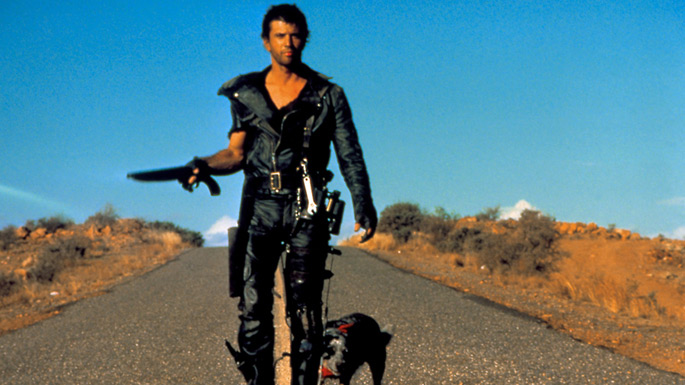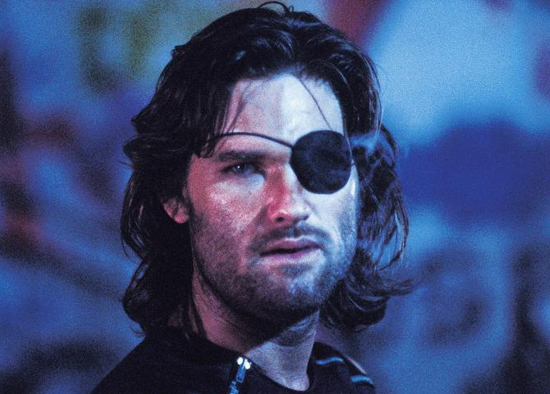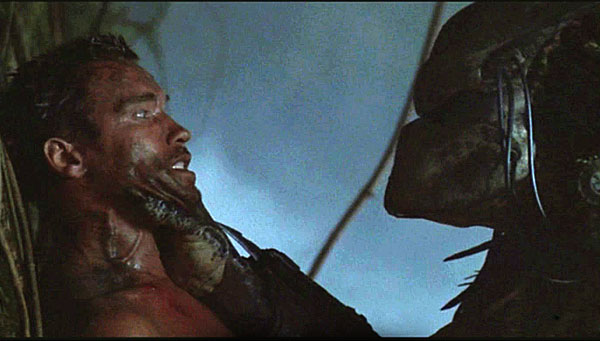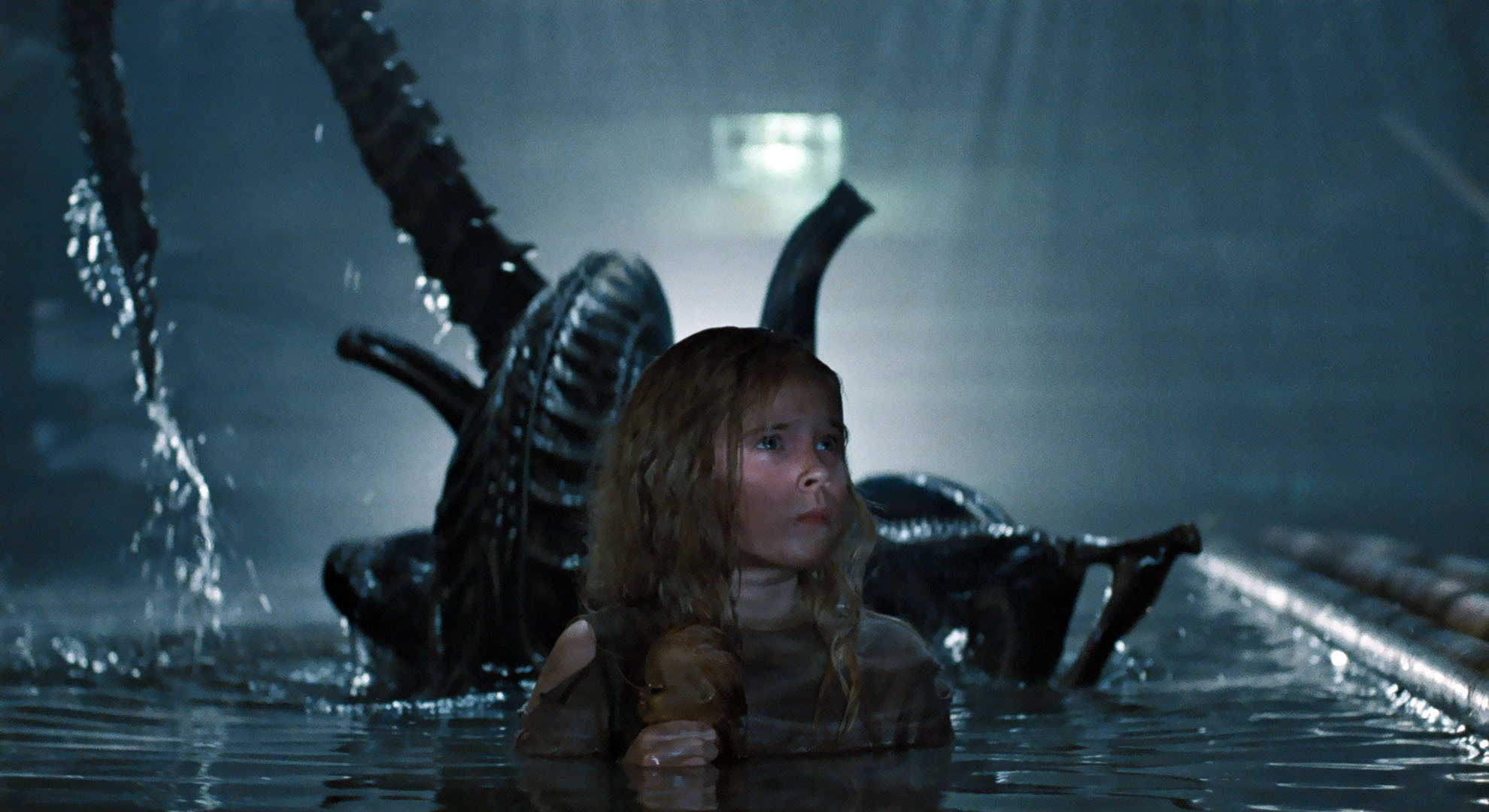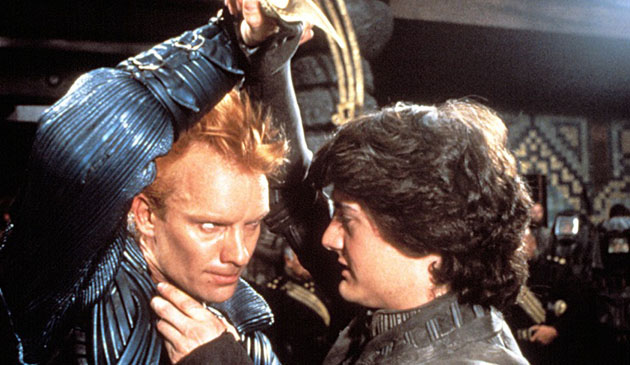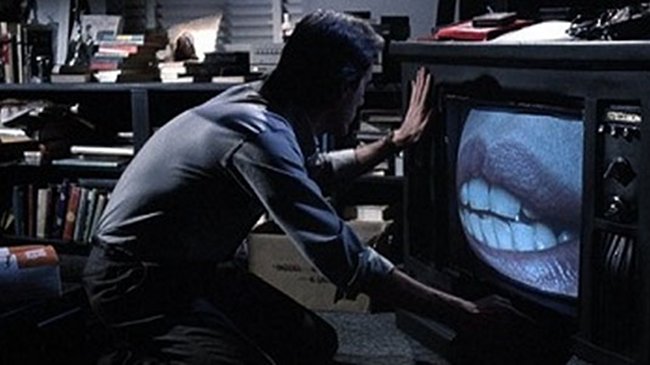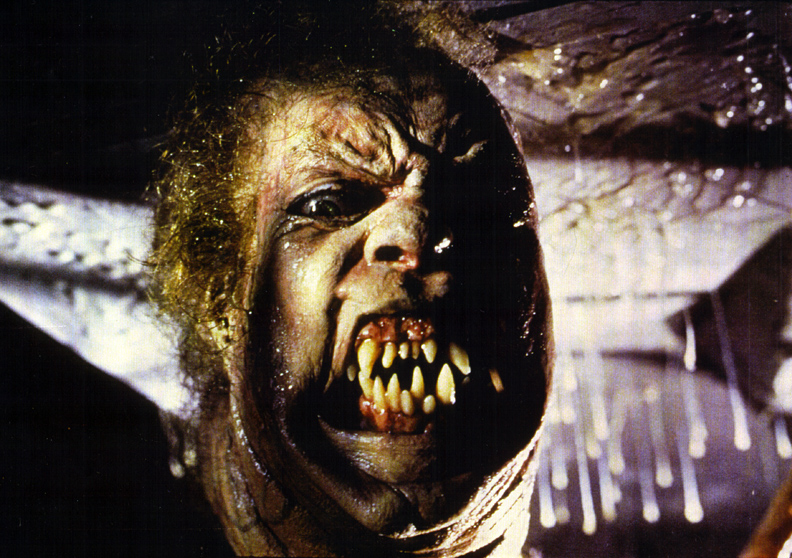14. The Road Warrior (1981)
More than even the first entry in the Mad Max trilogy (Road Warrior was called Mad Max 2 outside the United States), The Road Warrior set the precedent for every mohawked, shoulder-padded, dune buggy-lovin’ post-apocalyptic fantasy to hurl razor-sharp boomerangs at the audience ever since. It’s very possible that the current “zombie apocalypse” trend wouldn’t look anywhere near the way it does without at least some of the ideas put forth by George Miller’s action classic.
Though set in the future, Road Warrior goes in the opposite direction of most sci-fi by showing the degeneration of technology rather than its advance, with cars and trucks and industrial equipment cannibalized for the benefit of the last desperate bands of humanity to survive an undefined but potent holocaust. Car chases and large-scale demolition have rarely looked so good on film, and for better or worse, this is the movie that introduced the international filmgoing public to Mel Gibson.
13. Escape From New York (1981)
Once upon a time, 1997 was the future, and crime was bad enough that people just naturally assumed it would only progress to the point where the island of Manhattan would become a maximum security prison. Or maybe it was just John Carpenter who thought that. It’s a good thing that he did—the result is a lean, tough, sometimes humorous futuristic action tale, equal parts Mad Max and A Fistful Of Dollars, rooted in a very cool concept.
Russell shines as Snake Plissken, a World War III veteran-turned-crook who has 24 hours to rescue the President from the disintegrating hell of New York Prison before explosives implanted in his neck kill him. Kind of bleak but a lot of fun, and solid pulp entertainment from a master of the form.
12. Predator (1987)
Get to duh choppah, because Arnold Schwarzenegger is doing battle mano-a-mano with a big, crab-faced alien whatsit in the jungles of South America. This movie was probably inevitable; eventually producers ran out of ideas for things for Arnold to shoot at, so you might as well go with a monster from outer space.
The film develops its premise well, starting out as a decent-if-uninspired actioner and gradually morphing into one of the most unique cinematic sci-fi entries of the time. The Predator, originally intended to be a lizard-like being played by a somewhat disagreeable Jean-Claude Van Damme, instead ended up being a Stan Winston creation that has gone on to be one of the most iconic movie monsters of all time.
Tons of blood and guts and gunfire and 1980’s action in the classical style (not to mention a healthy dose of future Minnesota governor Jesse “The Body” Ventura). Say what you will of Mr. Schwarzenegger’s personal faults, the man did a lot for American science fiction films at this point in his career.
11. Aliens (1986)
How do you top a movie like Alien? By making it bigger, faster, and a lot more intense, and make sure Sigourney Weaver fights an alien monster as big as a house while wearing a dock-loading mech suit.
After the success of The Terminator, James Cameron went on to further demonstrate his mastery of action and excitement with this long-awaited sequel to to Ridley Scott’s original sci-fi/horror hybrid. He trades in queasy moodiness for extravagance, packing the runtime with lethal, slobbering aliens and trigger-happy space marines, as well as a more complex characterization of Ripley in the form of her surrogate mother-daughter relationship with lone colonial survivor Newt.
One of the rare cases of a sequel being as good as, and in some respects better than, the excellent movie that came before it.
10. Dune (1984)
After years of multiple filmmakers (including avant-garde auteur Alejandro Jodorowsky) attempting to bring Frank Herbert’s sprawling sci-fi epic to the screen, producer Dino De Laurentiis and director David Lynch managed to unleash on an unsuspecting public a finished product that is simultaneously a success and a failure.
The financial returns on the more than $40 million production were dismal (that was a ton of money back in 1984), and Lynch has largely written the film off as a mistake, but there’s no denying the strange, hypnotic power this film has over many viewers.
From the baroque sets and costumes, wacko characters every bit as disturbing as the ones in Lynch’s Eraserhead (Baron Harkonnen and the interstellar navigator are noteworthy standouts), to the bombastic score by the rock group Toto, Dune has, over the years, gained something of a following and reappraisals more positive than the reactions it received on its initial release. Though flawed, Dune is a glorious, spectacular, ultimately satisfying mess that stands as a landmark in 80’s sci-fi cinema.
9. Videodrome (1983)
After 1981’s Scanners, Cronenberg takes us even further into a realm of digital and technological madness, spinning a tale that is an unparalleled, hallucinogenic exploration of the nature of media absorption a good 20 years before nearly every human being in the developed world had a touchscreen phone fixed like an extra appendage to the end of their arm, not unlike the organic gun James Woods sports instead of a hand toward the end of this unique cinematic dreamscape. Or does he?
It’s never quite clear whether what we’re seeing is real or imagined, experienced or caused by a nefarious media moguls intent on destroying the world by exposing it to a deadly brand of televised carnality and violence. Easily one of Cronenberg’s most original, disturbing, and visionary films. Long live the new flesh.
8. The Thing (1982)
It’s not fair to call John Carpenter’s masterwork a remake of Howard Hawks’ The Thing From Another World. As the second adaptation of John W. Campbell, Jr.’s short story “Who Goes There?”, it comes much closer to the spirit of the original source material than its predecessor. But where Campbell largely implied the results of an alien life form taking over its human victims, Carpenter takes things to the absolute extreme, assaulting the audience with a grisly fireworks display of slime, tentacles, and distorted bodies.
The isolation of the research station feels oppressive, an outpost of civilization in a vast Arctic wasteland, and the characters’ increasing paranoia recalls the MacCarthy-era social criticism of Invasion of the Body Snatchers. Kurt Russel captures the same likable, hard-ass grittiness of a young Clint Eastwood. After American Werewolf, this is the best horror movie (and one the best science fiction movies) of the 1980’s.
